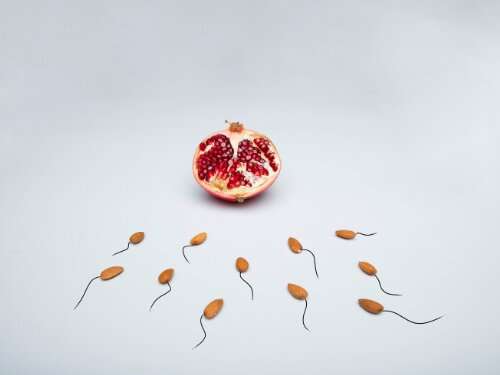
The ability of stem cells to fix impaired functions of host tissues after transplantation has been a lifesaving breakthrough in treating previously incurable conditions. Much like a coin toss, however, the fate of the transplanted stem cells is unpredictable. They may choose self-renewal, grow into a different kind of tissue, or die.
Spermatogonial stem cells follow the same stochastic fate of unpredictability in outcomes. But a group of fertility scientists led by Hiroshima University’s Yoshiaki Nakamura discovered a new method that has favorably flipped the odds and successfully reversed male infertility in mice—showing great promise for future applications in regenerating human sperm after cancer treatment and repopulating threatened and endangered species. Results of their study are published in the journal Cell Stem Cell.
“Transplantation of spermatogonial stem cells promises a wealth of applications such as the treatment of infertility in men and the preservation of genetic diversity. Yet, currently, its inefficiency rules out the practical application of this technology,” Nakamura, assistant professor at the HU Graduate School of Integrated Sciences for Life, said.
“Our knowledge about the fate behavior of individual spermatogonial stem cells and their progenies following transplantation remains poorly developed, limiting the potential to develop new strategies to increase the currently low transplantation efficiencies,” he added.
Taking an up-close look at single-cell resolution, the international team of Japanese and British scientists tracked the fate of transplanted spermatogonial stem cells in mice. They implanted normal mouse sperm stem cells in infertile mice and found that only a tiny fraction repopulates in the long-term as working spermatogonia and the rest change into a different type of cell—a process called differentiation—or cease to carry out its function and die.
Using these insights, they developed a new method that can artificially tune the fate of the sperm stem cells to increase the likelihood of repopulation to a level where fertility is restored. They briefly introduced a retinoic acid synthesis inhibitor after transplantation, which temporarily prevented the donor sperm stem cells from undergoing differentiation. The chemical inhibitor helped orchestrate an outcome where the stem cells choose a fate of self-renewal.
“We demonstrated that repopulation efficiency of transplanted spermatogonial stem cells increased by tuning their stochastic fate,” Nakamura said, adding that the next step for their research is to confirm if their new strategy will also work for livestock and eventually humans.
“My final objective is to apply spermatogonial stem cell transplantation for the fertility of male individuals with cancer after chemotherapy or the preservation of genetic diversity in farm animals and rare or endangered wild animals,” he said.
Hiroshima University

